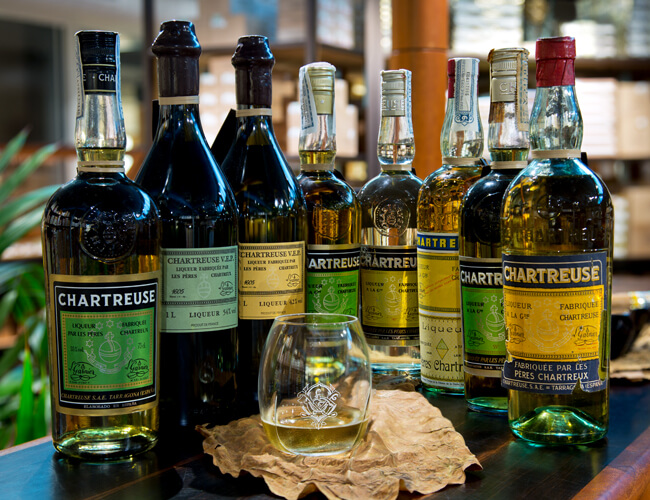Chartreuse, Tarragona, Queen of Liqueurs since 1605
In 1605, Marshal d'Estrées gave monks of the Vauvert Chartreuse, Paris, a manuscript revealing a formula for an “elixir” (containing almost all the medicinal plants of the time), the origin of which is unknown.
At that time, only monks and apothecaries had the necessary knowledge to work with plants.
In 1611, Cardinal Richelieu warmly thanked the Reverend Father of the Chartreuse of Paris; for he had sent him a bezoar relieving him from his "unfortunate illness".
(Bezoar: a stone found in the digestive tract of certain animals, to which one attributed medicinal virtues). Too complex, the recipe for this elixir - named "Elixir of long life" - seems to have only been partially used for these decades in Paris.
In 1737, the monastery of Grande-Chartreuse (near the city of Grenoble) decided to make an exhaustive study of this elixir. The apothecary of Grande-Chartreuse, Brother Jérôme Maubec, was charged with this task. He managed to fix the formula to have it become the Elixir Végétal de Grande-Chartreuse.
The marketing of the Elixir was then limited to Brother Charles who sold limited quantities in the markets of Grenoble and Chambéry.
Always made according to the same ingredients, this "Elixir of long life" is known today as "Elixir Végétal Grande Chartreuse", it is the 69% strength.
In 1764, the Green Chartreuse, the 55% strength called "Liqueur de santé", is developed.
Its success is immediate, but limited to the region of Dauphiné.
The French Revolution of 1789 disperses the monks and in 1793, as a precautionary measure, a copy of the precious recipe was created, while another copy remained with the Carthusians.
Arrested and sent to Bordeaux, the latter found a way to get the recipe out of his jail with the help of his friends, Dom Basile Nantas. Convinced that the Order would never recover in France, unable to use the secret himself, he sold the recipe to a pharmacist in Grenoble, Mr. Liotard, who never produced the Elixir.
In 1810, Emperor Napoleon, decided that "secret remedies" must be submitted to the Minister of the Interior for examination before it could be exploited by the State. Mr. Liotard sent the manuscript to the Ministry; it is returned to him as "Refused", seeing as the ingredients were common, the Elixir could no longer be considered "secret"!
At the death of Mr. Liotard, the recipe returned to the monastery of Grande-Chartreuse in 1816. Shortly after in 1838, a new liqueur is created: the "Mélisse", whose name became Chartreuse Blanche in 1840, was produced from 1838 to 1880 and again from 1886 to 1900.
It was in 1838 that the Green Chartreuse formula was adapted to produce a softer and less alcoholic liqueur, the "Chartreuse Jaune", quickly nicknamed "the Queen of Liqueurs".
In 1903, the Carthusians were expelled from France.
They carried their secret to set up a distillery in Tarragona, Spain, to produce the liquor.
Later they started producing the liqueur in Marseille from 1921 to 1929, under the name of "Tarragona".
During this same period, the French State sold their brand to a group of chemists who create the "Compagnie Fermière de la Grande Chartreuse"
This new company’s production had nothing to do with the real Chartreuse, later ceased its activities in 1929. The monks regained the use of the Chartreuse appellation; slowly they took over the distillation in France, in Fourvoirie, near the Monastery of the Grande Chartreuse.
These buildings were destroyed in 1935 by a landslide.
The manufacturing is then transferred to Voiron where it remained until November 2017.
Since November 2017 and after 18 months of work, the Distillery Aiguenoire in Entre-Deux-Guiers has entered into service.
The construction of this new site mainly involved local know-how especially for stills and for barrels.
The Distillery Aiguenoire, on former Carthusian land from 1618 to 1789, signifies a genuine return to basics for Chartreuse liqueurs.
This new production site allows the Carthusian monks to perpetuate a 400 years old tradition and know-how in peace and accordance to the aging practices of this fine French liqueur.
Different cuvees available.
Login to your online account to reserve your item
Or contact us at +41 22 552 2799


